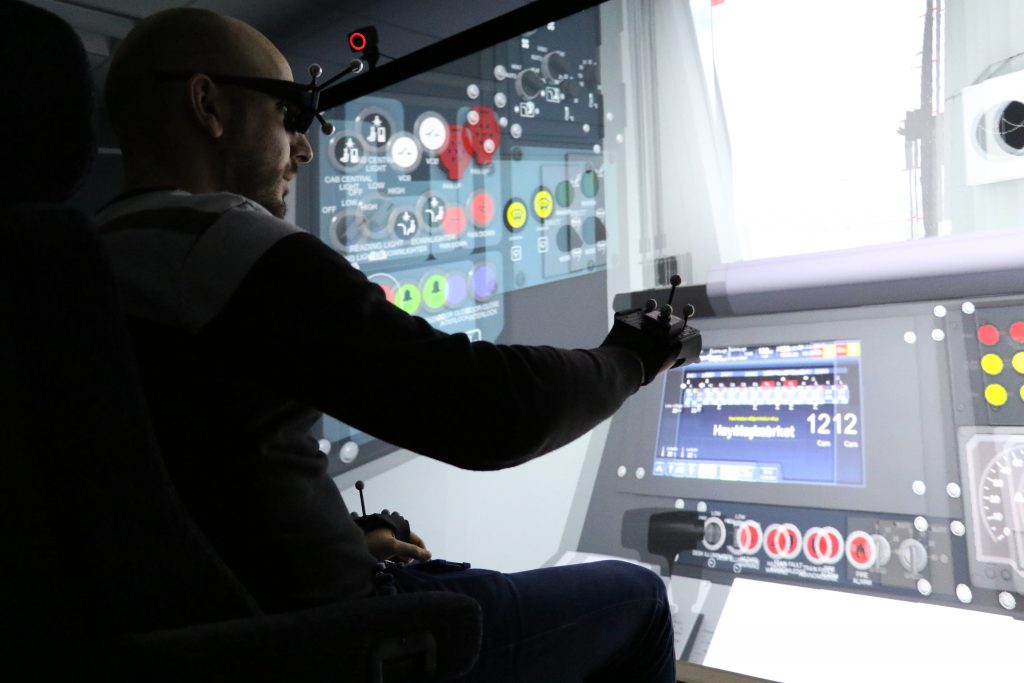Hitachi Rail in London and Kasado in Japan (ScotRail), wanted to explore digital tools for developing a virtual prototype of their driver’s cabin, eliminating design issues before costly manufacturing took place. The design would be based upon a train that would travel between Glasgow and Edinburgh, Scotland.
The simulation needed to represent the cabin as realistically as possible for the Hitachi team to test against their needs and specific requirements, removing space for error. Details to be considered during the development included the assessment of ergonomic, the control panel positioning and the display glare and reading light positioning to ensure drivers sight was clear and unbroken.

With the VEC support, Hitachi Rail could:
- Create an interactive and visual simulation of their train cabin
- Test several interactive components and variables including brightness, visibility, access and distance markers
- Use haptic technology for spatial awareness and testing
- Track driver movements and record results for modifications for design
- Access to software solutions through VEC partners and networks
The Benefits
- Realistic simulation offering full confidence for testing and validating design
- Modifications were made quickly and easily through a virtual environment
- Decrease design time and reduced prototype costs
- Full project delivery over a nine-month period
